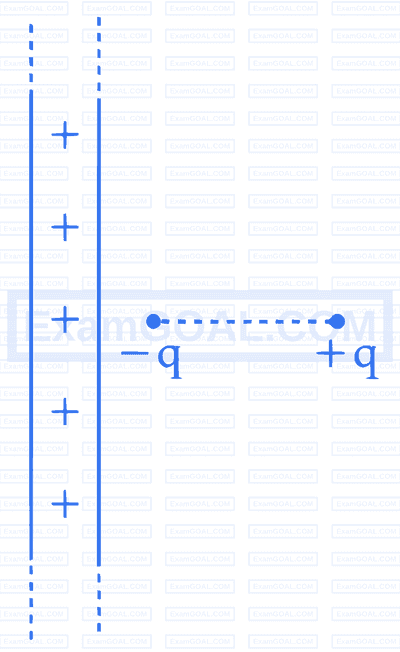
A point charge causes an electric flux of $-2 \times 10^4 \mathrm{Nm}^2 \mathrm{C}^{-1}$ to pass through a spherical Gaussian surface of 8.0 cm radius, centred on the charge. The value of the point charge is :
(Given $\epsilon_0=8.85 \times 10^{-12} \mathrm{C}^2 \mathrm{~N}^{-1} \mathrm{~m}^{-2}$ )

An electric dipole is placed at a distance of 2 cm from an infinite plane sheet having positive charge density $\sigma_{\mathrm{o}}$. Choose the correct option from the following.


An electric dipole of mass $m$, charge $q$, and length $l$ is placed in a uniform electric field $\vec{E} = E_0\hat{i}$. When the dipole is rotated slightly from its equilibrium position and released, the time period of its oscillations will be :

Match List - I with List - II.
| List - I | List - II |
|---|---|
| (A) Electric field inside (distance r > 0 from center) of a uniformly charged spherical shell with surface charge density σ, and radius R. | (I) σ/ε0 |
| (B) Electric field at distance r>0 from a uniformly charged infinite plane sheet with surface charge density σ. | (II) σ/2ε0 |
| (C) Electric field outside (distance r>0 from center) of a uniformly charged spherical shell with surface charge density σ, and radius R. | (III) 0 |
| (D) Electric field between 2 oppositely charged infinite plane parallel sheets with uniform surface charge density σ. | (IV) $\frac{\sigma}{\epsilon_0 r^2}$ |
Choose the correct answer from the options given below :